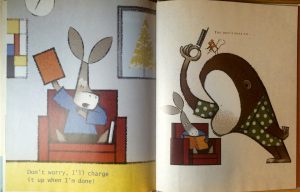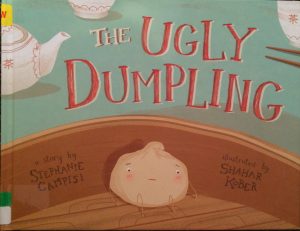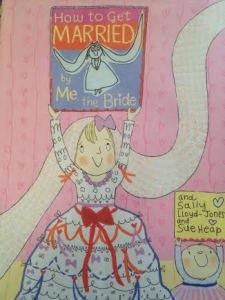
Author: Sally Lloyd-Jones
Illustrator: Sue Heap
Publishing Information: Schwartz & Wade Books, 2009
Number of Pages: 32
Tags: Fiction, Family, Picture Book, K-1
Genre: Realistic Fiction

Analysis:
This story serves as a step-by-step guide for how to find someone you’d like to marry, and how to, then, plan out a wedding. The story is told from the perspective of the “bride” and the strategies she uses for planning out her marriage.
I must admire the fact that the book is very inclusive, as the bride states a very diverse range of people you can marry, and brushes on the topic of polygamy as well when she says, “Usually, you’re not allowed to marry lots of people at once. Except sometimes you are” (Lloyd Jones, 8). As a result, I found that this would serve as a window to teach children to be very open-minded in terms of who another person chooses to marry, and the different types of families that result from those marriages. Also, it becomes both a mirror and a door, as they assess their own preferences in marriage and can practice both their own preferences and a tolerance for the preferences of others. As a result, I think that this simple how-to book can be a fun and more lighthearted way to teach children about an event that happens all the time.
Although the book is meant to be a silly and fun way to approach the topic, I did find bits of the story to be a bit problematic. The bride provides different lists of things you should not do in front of the person you like, or they won’t want to marry you. This could send a negative message to children that tells them that they must act a particular way to impress someone, rather than being themselves. Also, she creates a list of people you should not marry, which backpedals on the inclusiveness of the story, and teaches children that some people are less deserving of marriage/love than others. As a result, I think it sends the wrong message in some aspects, and I’m not sure I would want to read this to children in my classroom.
As a whole, I found this book to be a fun way for children to learn about the topic of marriage in terms they could understand. While I did have some critiques in some areas of the storyline, I was not completely turned off by the book and still found parts that I believe children can really benefit from.

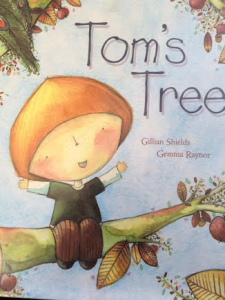
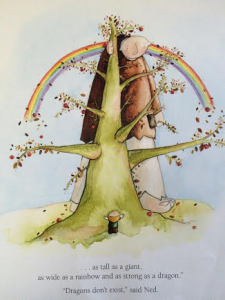

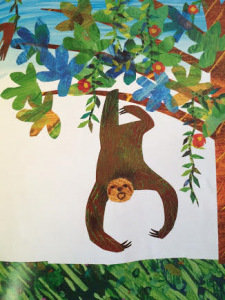


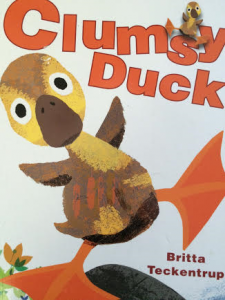
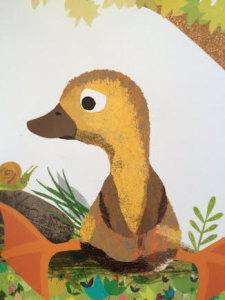
 Pinduli is the story of a beautiful hyena that wanders away from her mother into the East African wild. While Pinduli is wandering she runs into dogs, a lion and a zebra who all judged Pinduli’s looks. Pinduli becomes very self conscience and starts to change her looks to fit in, she gets to the point where she covers herself in dust making her look like a ghost. All the animals that once teased her were now afraid of her and begged her to forgive them for being mean since the believed she was a ghost. Pinduli told them they must find out why they were teasing others and give the one you teased food to be forgiven. Pinduli’s mother found her and reminded her of her inner and outer beauty
Pinduli is the story of a beautiful hyena that wanders away from her mother into the East African wild. While Pinduli is wandering she runs into dogs, a lion and a zebra who all judged Pinduli’s looks. Pinduli becomes very self conscience and starts to change her looks to fit in, she gets to the point where she covers herself in dust making her look like a ghost. All the animals that once teased her were now afraid of her and begged her to forgive them for being mean since the believed she was a ghost. Pinduli told them they must find out why they were teasing others and give the one you teased food to be forgiven. Pinduli’s mother found her and reminded her of her inner and outer beauty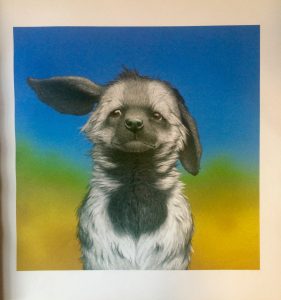
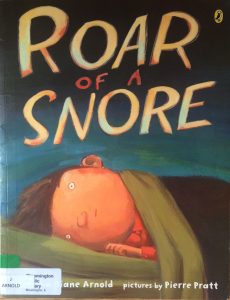
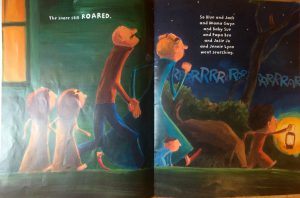
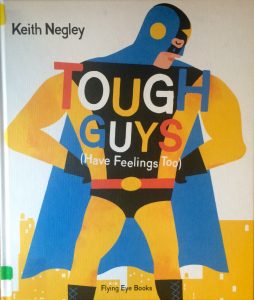 Tough Guys (Have Feeling Too) is a picture narrative book that talks about how its not always easy being the tough guy and sometimes the guys want people to know that their feelings get hurt too. I believe that this book would be considered a mirror for boys and a window for girls. For boys they see that they aren’t the only ones that get their feelings hurt and that they do not need to be tough all the time. For girls since this book is titled Tough Guys it might be hard for them to connect. Instead they might better relate to a book that talks about how girls are tough too and not always emotional. In the illustrations different races and cultures are represented. Every picture has a male in it and the book does a good job at having them be all different races. There are also different aspects of culture in the illustrations. For example there is a picture of a man in a Lucha Libre uniform which is a type of wrestling that is very popular in Mexican culture. There is also an image of a two men in Tae Kwon Do uniforms, which is a popular and historical Korean activity. Another example is a cowboy and his horseback riding which is a popular American activity. The book shows many different cultures allowing many different people the ability to connect with the text. The images in the text are always going towards the right, which shows that the characters are not as secure, this makes sense that they are all facing the right because all the men feel insecure for having feelings. On the last page there is an image of a father and son and they are facing forward. I took this, as they are content with being able to admit they do have feelings. Since there is minimal text within the book the images make the story interesting and comical but still have a purpose that teaches the lesson that it is okay to show feelings even if you are a tough guy and that you shouldn’t make fun of someone for having feeling. The images are very colorful even when a picture is meant to take place at night, which adds to the lightness of the text. I am unsure if I would use this book in my classroom since only the males in the class would be able to connect due to the lack of females. I wish this text was simply called Everyone Has Feelings and that they showed it is okay for everyone to have feelings to get rid of the negative stereotype that only girls are able to show their emotions.
Tough Guys (Have Feeling Too) is a picture narrative book that talks about how its not always easy being the tough guy and sometimes the guys want people to know that their feelings get hurt too. I believe that this book would be considered a mirror for boys and a window for girls. For boys they see that they aren’t the only ones that get their feelings hurt and that they do not need to be tough all the time. For girls since this book is titled Tough Guys it might be hard for them to connect. Instead they might better relate to a book that talks about how girls are tough too and not always emotional. In the illustrations different races and cultures are represented. Every picture has a male in it and the book does a good job at having them be all different races. There are also different aspects of culture in the illustrations. For example there is a picture of a man in a Lucha Libre uniform which is a type of wrestling that is very popular in Mexican culture. There is also an image of a two men in Tae Kwon Do uniforms, which is a popular and historical Korean activity. Another example is a cowboy and his horseback riding which is a popular American activity. The book shows many different cultures allowing many different people the ability to connect with the text. The images in the text are always going towards the right, which shows that the characters are not as secure, this makes sense that they are all facing the right because all the men feel insecure for having feelings. On the last page there is an image of a father and son and they are facing forward. I took this, as they are content with being able to admit they do have feelings. Since there is minimal text within the book the images make the story interesting and comical but still have a purpose that teaches the lesson that it is okay to show feelings even if you are a tough guy and that you shouldn’t make fun of someone for having feeling. The images are very colorful even when a picture is meant to take place at night, which adds to the lightness of the text. I am unsure if I would use this book in my classroom since only the males in the class would be able to connect due to the lack of females. I wish this text was simply called Everyone Has Feelings and that they showed it is okay for everyone to have feelings to get rid of the negative stereotype that only girls are able to show their emotions.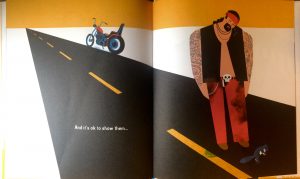
 t’s a Book is a story about a mouse, a monkey and a donkey (the donkey is considered a jackass in the book). The monkey has a book and the donkey is very confused by the book because he only has technology and asks the monkey many questions about the book. Throughout the whole story the monkey tries to explain the book to the donkey. In the end the monkey gives up on trying to explain the process of using books and the concept of libraries.
t’s a Book is a story about a mouse, a monkey and a donkey (the donkey is considered a jackass in the book). The monkey has a book and the donkey is very confused by the book because he only has technology and asks the monkey many questions about the book. Throughout the whole story the monkey tries to explain the book to the donkey. In the end the monkey gives up on trying to explain the process of using books and the concept of libraries.